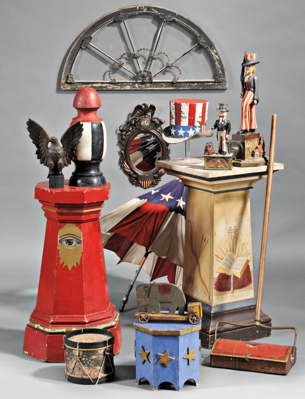We often refer to antiques as Edwardian, Victorian, Georgian, etc. but how do Americans refer to their antiques?
American antiques have well established styles. In the early years, they tended to contrast with more ornate European styles, but eventually came to reflect and influence those across the Atlantic.
American antiques dates from the late Gothic period (1550-1625); in Europe this style was inspired by Roman architecture and was characterised by decorative panels and indigenous woods.
In America, this is usually called Early Colonial or Early American (1565-1700) and tended to be simpler and more rustic.
The period is divided into the Oak Age (1540-1660), Elizabethan (1558-1603). American Colonial (1600-1690) and Pilgrim Century (1600-1690)
Baroque (1620-1715) in Western Europe was characterised by ornate twisted columns and heavy moldings inspired by the Roman Catholic Church.
Comparable American antiques from the Pilgrim Century were far more austere and simple in style. This period encompasses Puritan (1645-1670) Pennsylvania Dutch (1670-1820) and Dutch Colonial (1694-1702).
The French-influenced Rococco in Europe (1695-1760) was a lighter version of Baroque.
This contrasted with Anglo-German styles favoured in America: William and Mary (1700-1725), Queen Anne (1720-1750), and Pennsylvania German (1720-1850). The Neo-Classical movement (1755-1830) in Europe saw the emergence of slender, less ornate styles and this was suited to the American style.
From this time on, American antiques began to mirror European styles – and also to influence the European market.
Americans readily adopted Chippendale (1755-1790) Hepplewhite and Sheraton (1790-1820), but also created new styles such as Shaker (1775-1870), the sharply geometric Federal styles (1780-1830) and neo-classicist Duncan Phyfe (1800-1850)
From this time on, European and American styles are practically the same: American antiques dealers refer to Victorian (1830-1880), Arts & Craft (1880-1900), Art Noveau (1900-1930) and Art Deco (1920-1930) just as we do.











